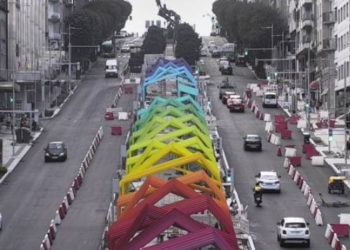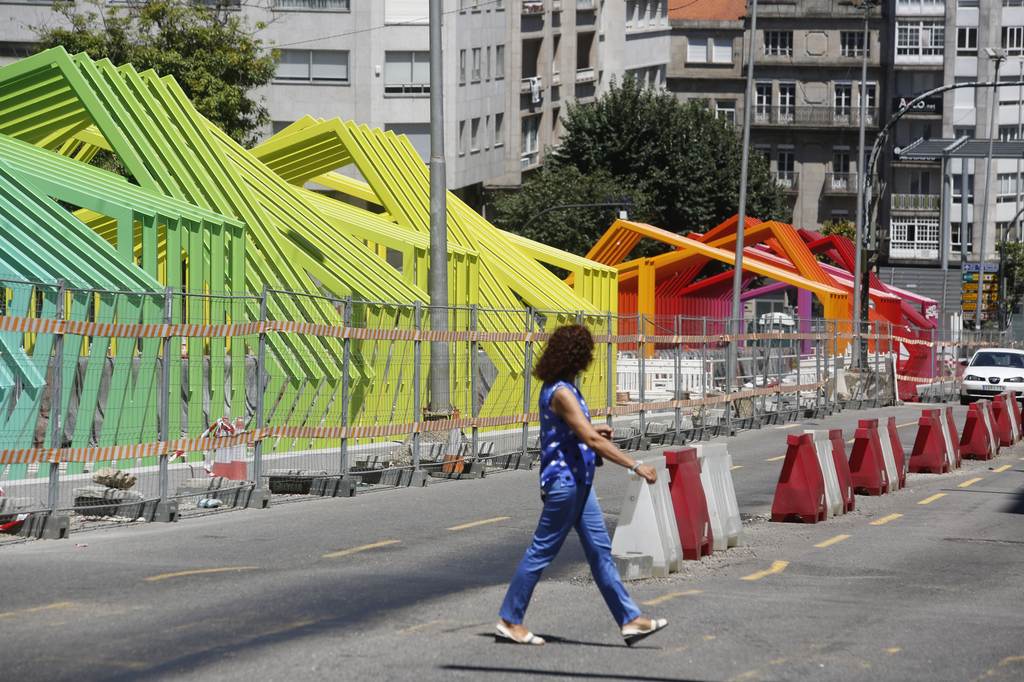Vigo, that coastal city located in the northwest of Spain. It is to hear Vigo and think of the icy waters of the Atlantic Ocean, think in “Rías Baixas”, the continuous squawking of the seagulls or the intense aroma of saltpetre, the humidity that gets into our bones in winter and the pleasant sea breeze that refreshes you on a hot summer afternoon. In short, to talk about Vigo is to talk about a city that lives by and for the sea.
Almost everyone who has never been lucky enough to be in Vigo, relates Vigo to a typical coastal city; imposing dikes that safeguard the ships and boats that sleep in its ports waiting to go out to sea to complete the fishing day, de odd beach as the main summer attraction and flat streets without too much slope.
However, Vigo surprises everyone for two things: the first one is that the city has no beaches, and you must move around to find one near the city. And the second one, is that many of Vigo’s streets have steep slopes.
With the intention of making the day-to-day life of Vigo’s citizens more comfortable, the Vigo City Council took the initiative of installing electric ramps on one of the most important streets of the city, the “Gran Vía”. A project with a budget of about 5 million euros an whose need is not discussed by any of the neighbours in the area. While young people do not have much difficulty to walk in Vigo, older people report having problems with the slopes. That is why this whole group, and most of the population of Vigo, agree that it has been a good idea to carry out a project of these characteristics.

Picture 1: frontal and elevated view of the avenue and the structure (source: https://www.vigoe.es/vigo/local/cambio-de-imagen-en-la-gran-via-tras-instalarse-las-primeras-rampas-mecanicas/).
So far, everything seems to be correct, a timely solution to the problem presented by the city’s slopes. However, not all citizens are happy with the solution adopted. The controversy comes from the design of the deck. As can be seen in PICTURE 1, the construction does not leave anyone indifferent, and has caused a division of opinions among the citizens who have been interviewed over the last few weeks because the end of the work and the corresponding inauguration are near.
The solution adopted to cover the mechanical ramp is a gable roof with different sized porticos generated from metal profiles of different colours. At the same time, there will e installed solar panels to help generating part of the energy required for the ramps. The side and top enclosures are made of glass. It seems to be a common cover solution. But the bright and striking colours, added to the asymmetry of the arrangement of the porticos, generates a striking appearance, totally breaking with the aesthetics of the zone.
For the construction of the ramp, most of the trees that had been planted on the street were cut down. This fact caused a great stir among the citizens. The Gran Vía is one of the most important avenues of the city, which absorbs a large part of the vehicle traffic generated daily. This makes it an avenue wide enough to have sought a solution that would not have required the felling of all the vegetation in the area. At least, they must have redistributed the space, adopting an alternative that would allow trees and the ramps to coexist. Such was the uproar, that they had to plant more than 70 trees and 90 bushes to merge with the mechanical ramps and their corresponding roofs.

Picture 2: Side view of the roof and structure (source: https://www.atlantico.net/articulo/vigo/concello-ejecuta-obras-40-millones-preve-otros-250/20200726235534787281.html).
Finally, in a more technical analysis, it is concluded that it may not be the best solution. Like all the cities in the north of Spain, Vigo has a climate in which a large part of the year presents considerable rainfall. Rain is one of the worst enemies of metal structures, and if we also add the negative impact generated by having the sea so close, we get quite harmful conditions for the metal profiles that make up the deck, in addition the profiles are exposed, instead of being protected by the deck. All these conditions make the cost of maintenance higher because it will have to be more thorough in order to prevent rusting and corrosion.
The conclusion reached after listening to the opinions of the citizens and the technical analysis carried out, is that it was probably not the best solution. First and foremost, it is surprising that with the awareness that society has of the environment today, and especially the galician people after the devastating fires they suffered a few years ago, they chose to remove all the vegetation at the project location. Luckily, they have remedied the damage caused.
On the other hand, it is also difficult to understand how it was decided to use such a different design from the one in the area, which generates such a great contrast. It seems too risky a proposition given the investment that has been made. Surely, the most prudent option would have been to opt for a proposal that was better suited to the environment and that did not generate so much controversy among citizens.
In short, both from an aesthetic and technical point of view, it can be concluded that it was not a very good solution, starting with the damage caused by eliminating completely the vegetation in the area, continuing with the visual impact generated by the design of the structure that breaks the harmony of the area and ending with the little constructive sense of the proposal.
